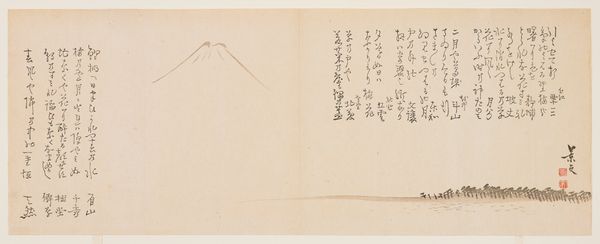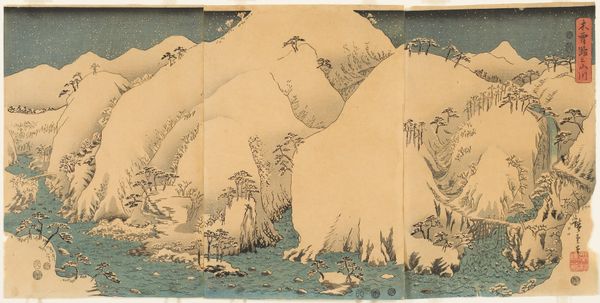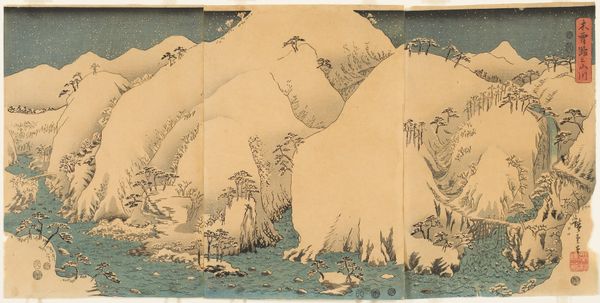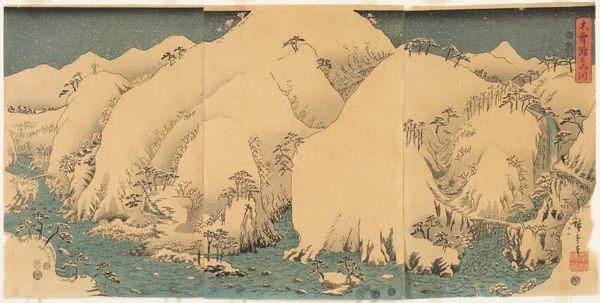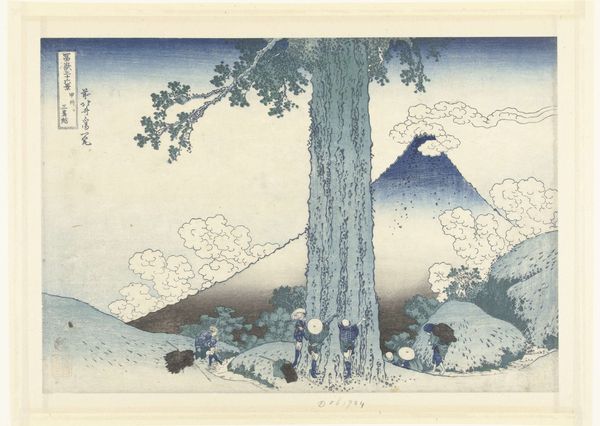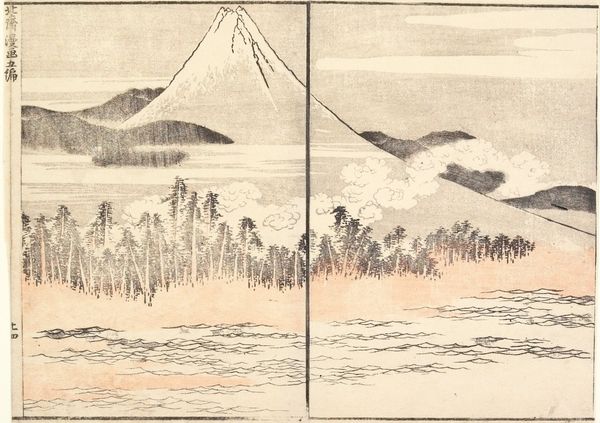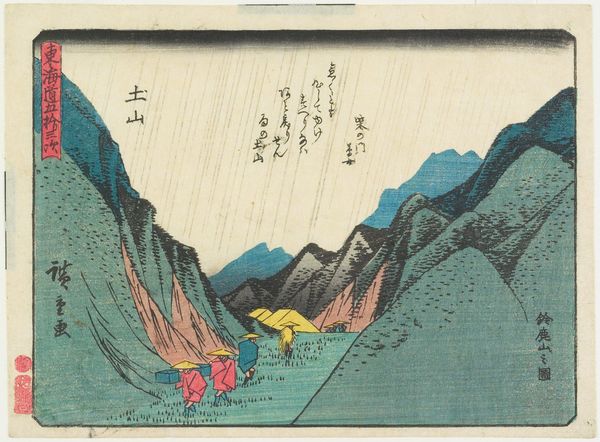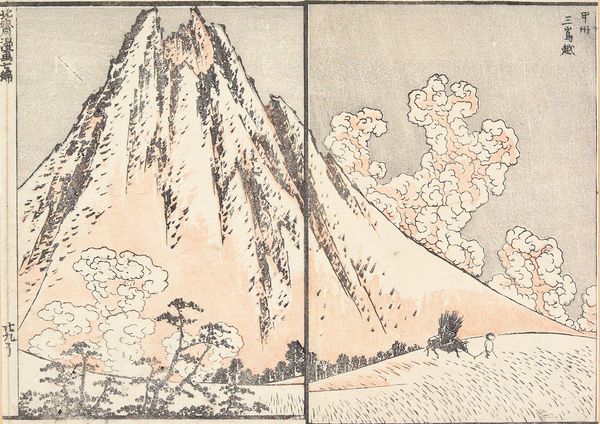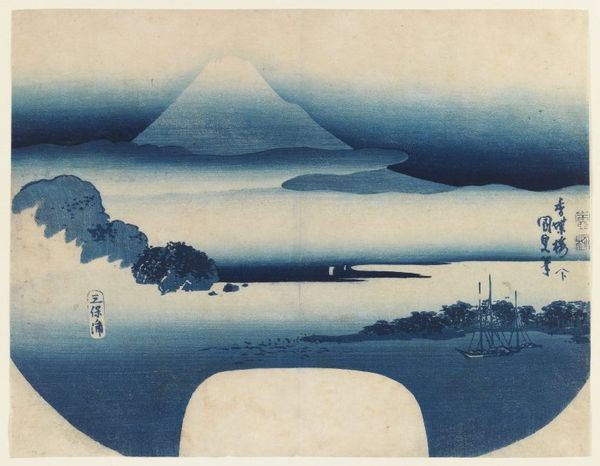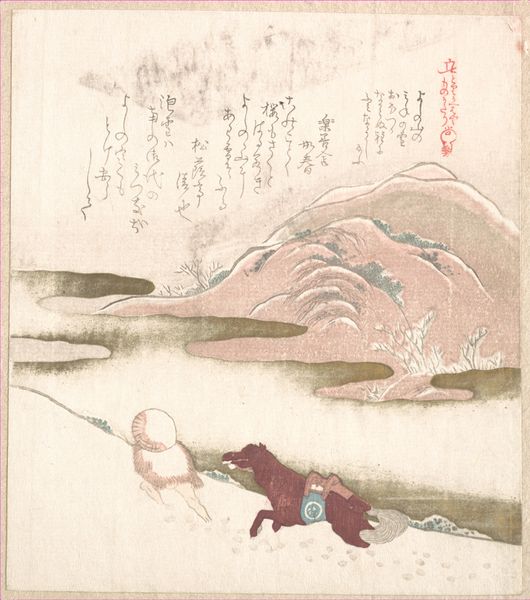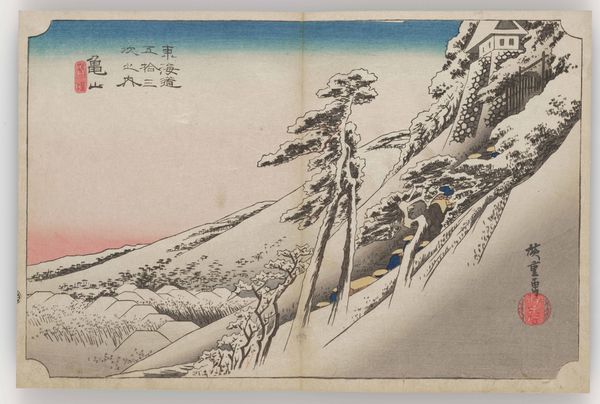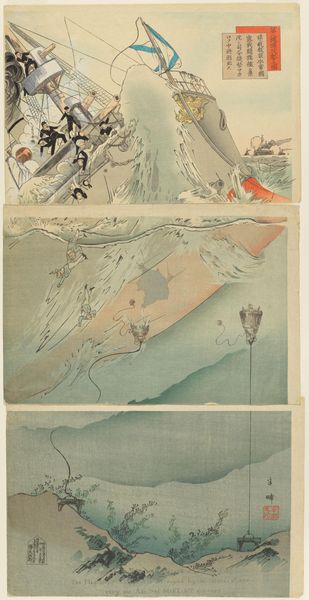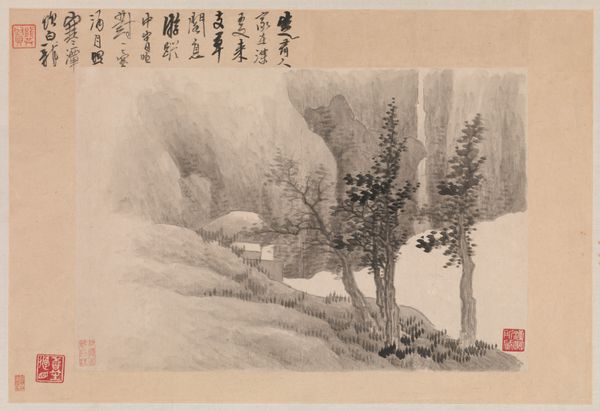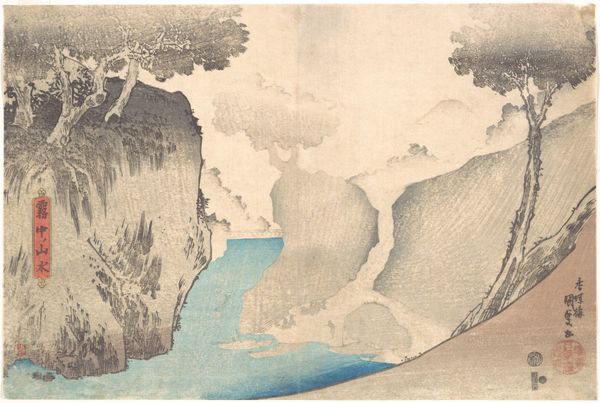
tempera, print, woodblock-print, pencil
#
tempera
# print
#
asian-art
#
landscape
#
ukiyo-e
#
coloured pencil
#
woodblock-print
#
pencil
Dimensions: height 256 mm, width 369 mm
Copyright: Rijks Museum: Open Domain
Editor: So, this is "Fuji," a woodblock print made around 1826 by Nakamura Hōchū. The muted colours and simple composition create this feeling of quiet contemplation. What jumps out at you when you see this piece? Curator: It's fascinating how Hōchū utilized the inherent properties of the woodblock print to depict Mount Fuji. Think about the labor involved – the carving, the layering of tempera… each stage a physical interaction with the material itself. We're not just looking at an image of a mountain, but an artifact imbued with the process of its creation. Does that shift your perception? Editor: It does. I was so focused on the subject matter that I hadn’t thought about the labor aspect. I suppose with a print, it is easy to miss that. So, how would that change how people saw this print back then? Curator: Well, woodblock prints were relatively accessible art. Unlike painting, printmaking allowed for mass production, shaping and reflecting the tastes of a broader consumer base. Considering that it is Ukiyo-e, the materials and processes are accessible, not obscuring them, highlighting the connection between nature and how everyday people perceived it through art. Editor: I guess the accessibility of prints is important for seeing its wider impact, beyond art collectors. It becomes a window into understanding that specific time and what resonated culturally. Curator: Exactly. The print isn't merely a representation, it’s evidence. It's material culture speaking to the relationship between production, consumption, and aesthetic appreciation within a particular historical context. Editor: I never considered prints in such a concrete, process-oriented way before. Looking at the actual creation of something gives so much more context than just considering the surface. Curator: It reveals the often-hidden social and economic layers embedded within artistic creation. There are ways of expanding that lens into almost all art pieces.
Comments
No comments
Be the first to comment and join the conversation on the ultimate creative platform.
